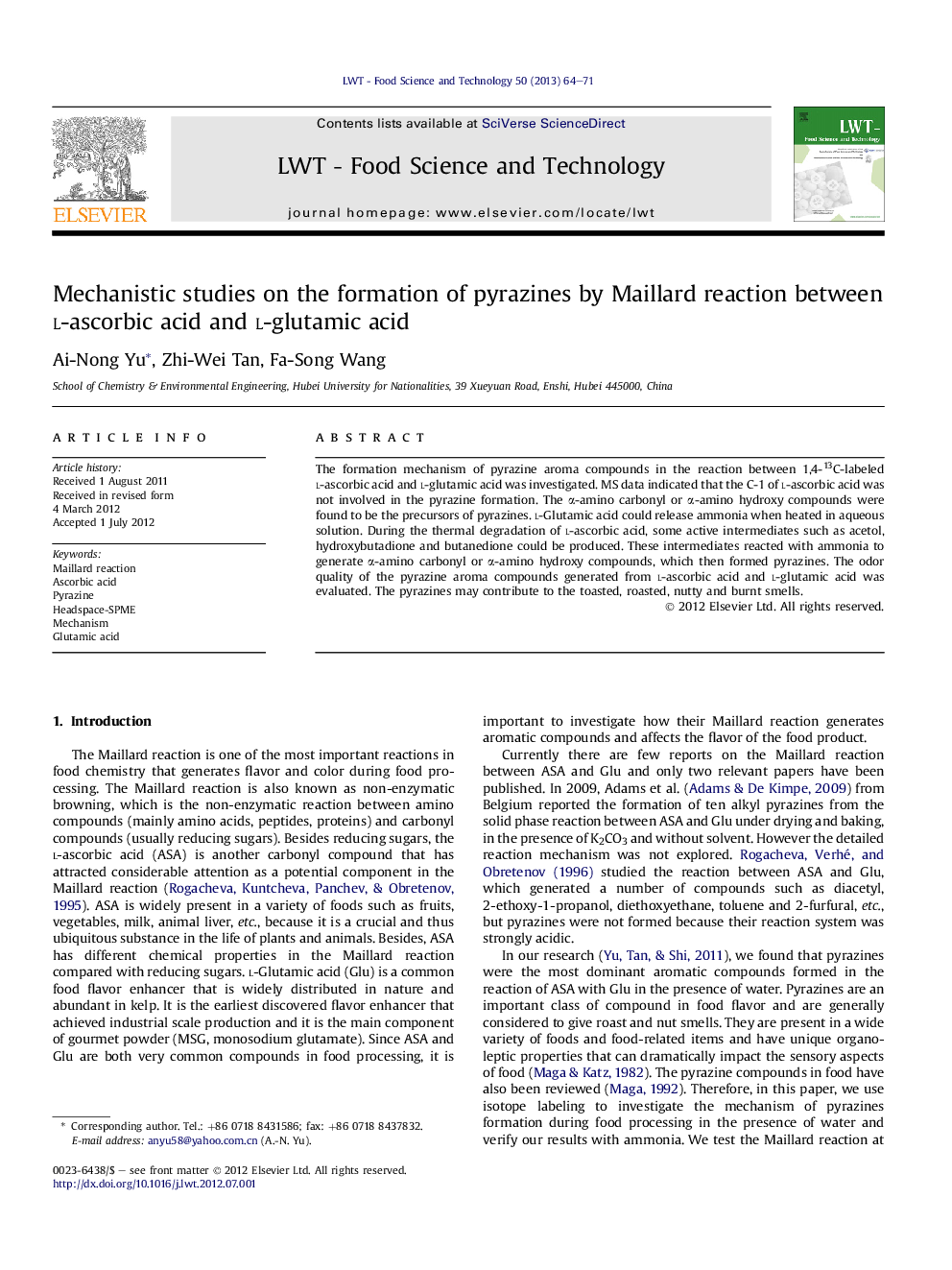| Article ID | Journal | Published Year | Pages | File Type |
|---|---|---|---|---|
| 6404974 | LWT - Food Science and Technology | 2013 | 8 Pages |
The formation mechanism of pyrazine aroma compounds in the reaction between 1,4-13C-labeled l-ascorbic acid and l-glutamic acid was investigated. MS data indicated that the C-1 of l-ascorbic acid was not involved in the pyrazine formation. The α-amino carbonyl or α-amino hydroxy compounds were found to be the precursors of pyrazines. l-Glutamic acid could release ammonia when heated in aqueous solution. During the thermal degradation of l-ascorbic acid, some active intermediates such as acetol, hydroxybutadione and butanedione could be produced. These intermediates reacted with ammonia to generate α-amino carbonyl or α-amino hydroxy compounds, which then formed pyrazines. The odor quality of the pyrazine aroma compounds generated from l-ascorbic acid and l-glutamic acid was evaluated. The pyrazines may contribute to the toasted, roasted, nutty and burnt smells.
⺠Study on pyrazines from reaction of ascorbic acid with glutamic acid. ⺠Study on mechanism of formation of pyrazines. ⺠α-Amino carbonyls or α-amino hydroxys were the precursors of pyrazines. ⺠Ammonia is the key compound in the formation of pyrazines. ⺠C-1 of ascorbic acid was not involved in the formation of pyrazines.
